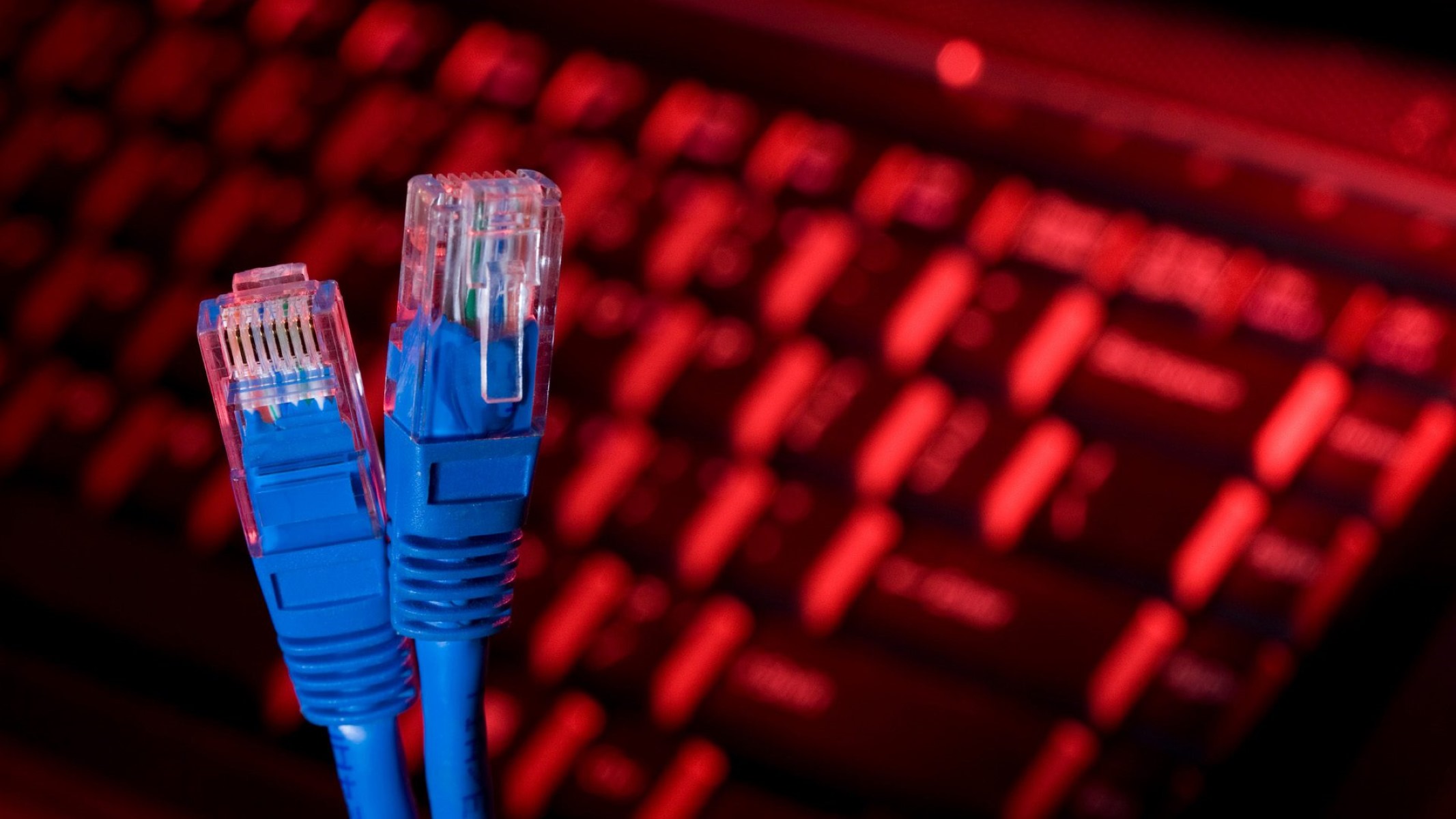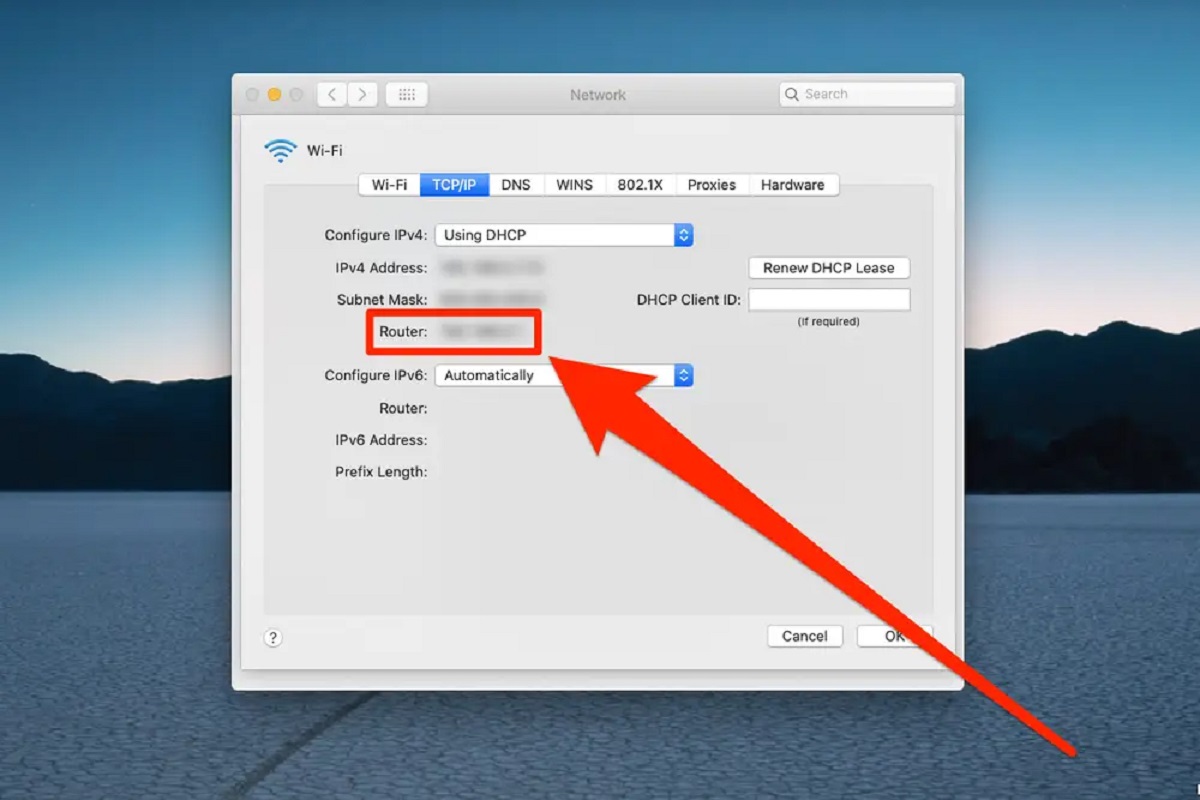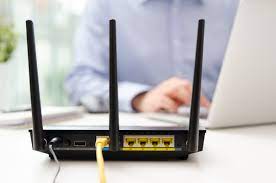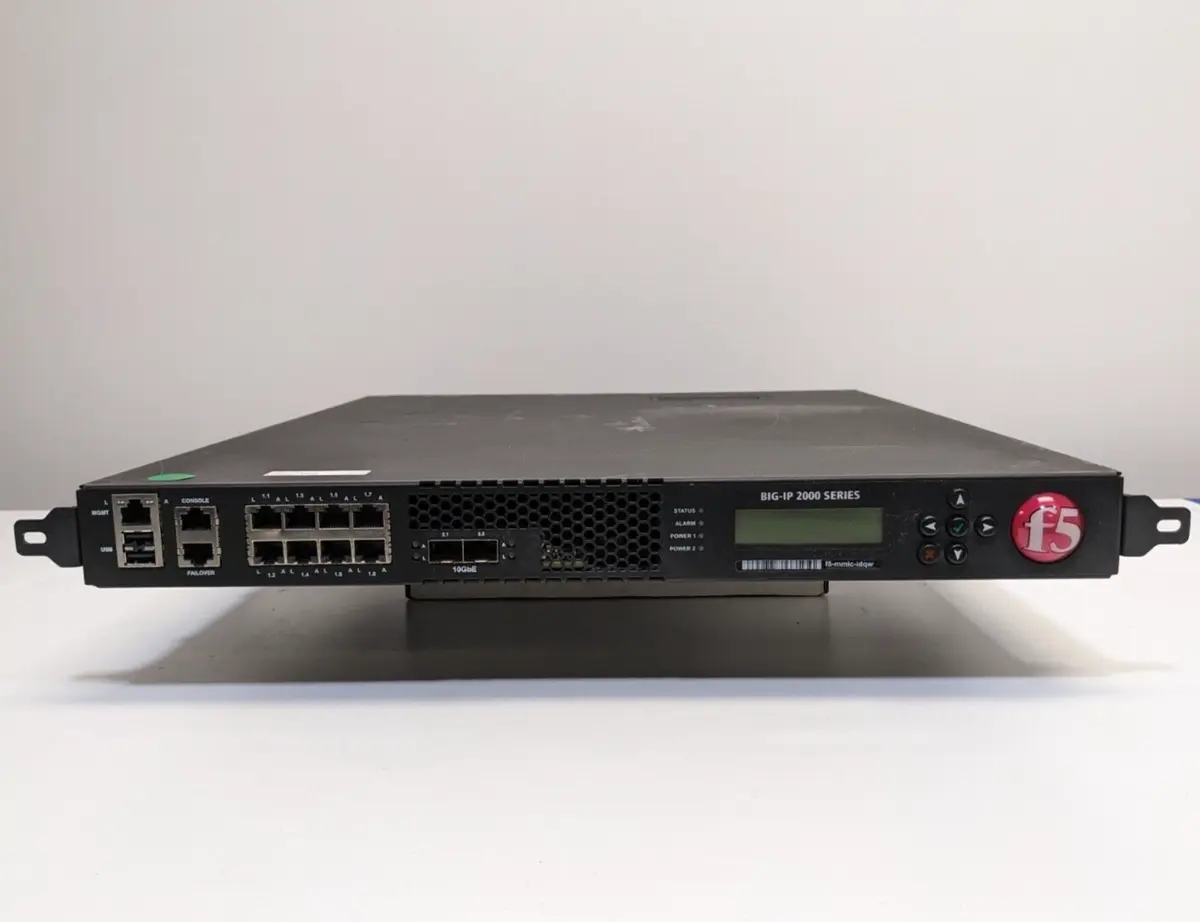Introduction
Welcome to the world of IP configuration! In today’s digital age, where connectivity plays a vital role in our lives, understanding how IP configuration works is crucial. Whether you’re a tech enthusiast, a network administrator, or simply someone curious about how the internet functions, this article will provide you with a comprehensive overview of IP configuration and its significance.
IP configuration, also known as Internet Protocol configuration, refers to the process of assigning and configuring IP addresses for devices on a network. An IP address is a unique numerical identifier that enables devices to communicate with each other over an IP-based network, such as the internet.
Without IP configuration, devices would not be able to establish connections, send data packets, or access network resources. It plays a vital role in enabling seamless communication and data transfer between devices, regardless of their physical location.
Understanding how IP addresses are assigned is fundamental to comprehending IP configuration. There are two main types of IP configuration: static and dynamic. In a static IP configuration, IP addresses are manually assigned to devices. On the other hand, in a dynamic IP configuration, IP addresses are automatically assigned to devices through the use of protocols like DHCP (Dynamic Host Configuration Protocol).
This article will delve into the details of each IP configuration type, discussing their advantages and disadvantages. Additionally, we’ll explore how to check IP configuration on different operating systems and troubleshoot common IP configuration issues.
Whether you’re setting up a home network, managing a corporate network, or simply want to expand your knowledge on the topic, the following sections will walk you through the fascinating world of IP configuration and equip you with the necessary insights to ensure smooth and efficient connectivity.
Now, let’s dive into the intricacies of IP configuration and explore the various facets of this essential aspect of networking.
Definition of IP Configuration
IP configuration, short for Internet Protocol configuration, refers to the process of setting up and configuring IP addresses for devices on a network. An IP address is a unique numerical identifier assigned to each device connected to an IP-based network, enabling them to communicate and exchange data with other devices.
The IP configuration determines how devices obtain their IP addresses, whether through manual assignment or automatic allocation. It plays a crucial role in establishing connectivity and facilitating data transfer across networks, including the internet.
IP configuration involves various components and settings that determine how devices interact within the network. These settings include the IP address itself, subnet masks, default gateways, and DNS (Domain Name System) servers. Together, they form the foundation for devices to communicate and access network resources.
In a typical IP configuration, devices receive an IP address that consists of four groups of numbers separated by periods, such as 192.168.0.1. Each group, called an octet, represents a value from 0 to 255. This addressing scheme allows for a vast number of unique combinations, accommodating the growing number of devices connected to the internet.
IP configuration can be performed manually or automatically. In a static IP configuration, network administrators manually assign and configure the IP addresses for each device. This method is typically used in situations where devices require consistent and unchanging addresses, such as servers or network printers.
On the other hand, dynamic IP configuration leverages protocols like DHCP (Dynamic Host Configuration Protocol) to automatically assign IP addresses to devices on the network. DHCP servers manage a pool of available IP addresses and lease them to devices as needed. This method simplifies network administration and allows for more efficient allocation of IP addresses.
Understanding the intricacies of IP configuration is essential for network administrators and IT professionals to ensure a well-functioning network. It enables the smooth flow of data between devices and facilitates seamless communication, both within local networks and across the internet.
In the following sections, we will explore the different types of IP configuration, delve into their advantages and disadvantages, and learn how to troubleshoot common IP configuration issues.
How IP Addresses are Assigned
IP addresses are assigned to devices on a network through various methods, depending on the type of IP configuration implemented. Understanding how IP addresses are assigned is crucial for network administrators and individuals managing their own networks.
In a static IP configuration, IP addresses are manually assigned to devices by network administrators. This typically involves selecting an IP address from a predetermined range and configuring it on the device. Administrators ensure that each device on the network has a unique IP address to avoid conflicts.
On the other hand, dynamic IP configuration uses the Dynamic Host Configuration Protocol (DHCP) to automatically assign IP addresses to devices. DHCP servers manage a pool of available IP addresses and lease them to devices when they connect to the network. This allows for efficient allocation of IP addresses and simplifies network administration.
When a device is configured to obtain its IP address dynamically, it sends out a DHCP discover message to the network. The DHCP server responds with an offer, providing the device with an available IP address, subnet mask, default gateway, and DNS server information. The device then accepts the offer and configures the provided IP address settings.
Automatic IP address assignment through DHCP offers several benefits. It eliminates the need for manual configuration, making it easier to manage large networks with numerous devices. DHCP can also dynamically allocate IP addresses based on network demand, ensuring optimal use of available addresses and preventing address conflicts.
It is important to note that DHCP leases IP addresses for a specified period called the lease duration. Once the lease expires, the device must renew the lease to continue using the same IP address. This allows for IP addresses to be reclaimed if a device is no longer connected to the network or if a different device requests the same IP address.
For devices that require consistent and unchanging IP addresses, such as servers or network printers, a static IP configuration is preferred. Static IP addresses are manually assigned and do not change unless specifically reconfigured. This ensures that the device has a consistent and predictable IP address, making it easily accessible on the network.
Overall, the method of IP address assignment depends on the type of IP configuration implemented, with static IP addressing offering stability and dynamic IP addressing providing flexibility and efficient use of IP addresses.
In the next section, we will delve deeper into the different types of IP configuration, exploring the advantages and disadvantages of each approach.
Types of IP Configuration
There are two main types of IP configuration: static and dynamic. Each type has its own advantages and considerations, and understanding them is essential for effectively managing networks and assigning IP addresses.
1. Static IP Configuration:
In a static IP configuration, IP addresses are manually assigned to devices. Network administrators manually configure each device with a specific IP address, subnet mask, default gateway, and DNS server information. These settings remain fixed unless manually changed.
Static IP configuration is commonly used for devices that require consistent and unchanging IP addresses, such as servers, network printers, and certain network devices. By assigning a static IP address, it becomes easier to identify and access these devices on the network.
One of the advantages of static IP configuration is the predictability of IP addresses. As the addresses are manually assigned, there is no risk of them changing unexpectedly. This can be beneficial for certain applications and devices that rely on maintaining a consistent IP address for connectivity.
However, static IP configuration requires careful management and documentation to avoid IP address conflicts. Each device on the network must be assigned a unique IP address to prevent conflicts that could disrupt network communication. Manually assigning IP addresses can also be time-consuming and cumbersome for large networks with numerous devices.
2. Dynamic IP Configuration:
In dynamic IP configuration, devices obtain IP addresses automatically through the Dynamic Host Configuration Protocol (DHCP). A DHCP server manages a pool of available IP addresses and leases them to devices as they connect to the network.
Dynamic IP configuration offers several advantages in terms of network management and address allocation. It simplifies the overall administration process, as IP addresses are automatically assigned to devices, eliminating the need for manual configuration. This can be particularly beneficial for large networks with a high number of devices.
Dynamic IP configuration also allows for efficient use of IP address resources. When a device disconnects from the network, its IP address becomes available for reassignment to other devices. This flexibility helps prevent IP address exhaustion and ensures optimal use of available addresses.
However, dynamic IP configuration introduces the possibility of IP address changes for devices. The lease duration determines how long a device can use a specific IP address before it needs to renew the lease. This can result in IP address variations for devices each time they reconnect to the network.
It is worth noting that even in a dynamically assigned IP configuration, specific devices can still be assigned static IP addresses if necessary. DHCP servers can reserve specific IP addresses for such devices to ensure they always receive the same address.
In the following sections, we will explore the advantages and disadvantages of each IP configuration type in more detail, helping you determine which approach is best suited for your specific network requirements.
Static IP Configuration
Static IP configuration is a method of assigning IP addresses to devices on a network where the addresses are manually configured and remain fixed unless changed. In this type of configuration, network administrators assign a specific IP address, subnet mask, default gateway, and DNS server information to each device.
This method is commonly used for devices that require consistent and unchanging IP addresses, such as servers, network printers, and specific network devices. By assigning a static IP address, it becomes easier to identify and access these devices on the network.
One of the primary advantages of static IP configuration is the predictability and stability of IP addresses. Since the addresses are manually assigned, there is no risk of them changing unexpectedly. This can be beneficial for certain applications and devices that rely on maintaining a consistent IP address for connectivity, such as servers that host websites or serve as file servers.
Static IP configuration also allows for better control over network resources and security. With each device having a fixed IP address, network administrators can create specific rules and policies based on these addresses. This enables precise access control and simplifies network monitoring and troubleshooting.
However, there are a few considerations to keep in mind when using static IP configuration. One of the main challenges is the potential for IP address conflicts. It is crucial to ensure that each device on the network receives a unique IP address to avoid conflicts that can disrupt network communication. Managing IP address assignments and documentation becomes essential to avoid any clashes.
Another potential drawback of static IP configuration is the time and effort required for manual configuration, especially in large networks with numerous devices. Network administrators need to assign and configure IP addresses for each device individually, which can be time-consuming and prone to human error. Additionally, if network changes occur, such as reorganizing subnets or changing service providers, updating the static IP configurations on all devices becomes a complex task.
Despite these considerations, static IP configuration remains a reliable choice for devices that require a consistent and fixed IP address. Its predictability and control over network resources make it ideal for critical devices and services that need to be easily accessible and identified on the network.
In the next section, we will explore the dynamic IP configuration, discussing its advantages and considerations.
Dynamic IP Configuration
Dynamic IP configuration is a method of assigning IP addresses to devices on a network automatically. It utilizes the Dynamic Host Configuration Protocol (DHCP) to manage the allocation of IP addresses. In this configuration, a DHCP server maintains a pool of available IP addresses and leases them to devices as they connect to the network.
Dynamic IP configuration offers several advantages in terms of network management and address allocation. One of the primary benefits is the simplification of network administration. With dynamic IP configuration, devices do not require manual configuration of IP addresses. They automatically obtain an IP address from the DHCP server when connecting to the network.
The automatic assignment of IP addresses streamlines the process of adding new devices to the network. Rather than manually configuring each device, the DHCP server takes care of assigning appropriate IP addresses, subnet masks, default gateways, and DNS server information. This scalability makes dynamic IP configuration particularly efficient for networks with a large number of devices.
Dynamic IP configuration also allows for efficient use of IP address resources. When a device disconnects from the network, its leased IP address is returned to the DHCP server’s pool and can be reassigned to another device. This dynamic allocation prevents address exhaustion and ensures optimal utilization of available addresses.
Another advantage of dynamic IP configuration is flexibility. Devices can easily connect and disconnect from the network without requiring manual reconfiguration. This feature is particularly beneficial for mobile devices or temporary connections, as the IP address assignment is done automatically and seamlessly.
However, dynamic IP configuration presents a few considerations. The most notable is the potential for IP address changes. Since devices obtain IP addresses from the DHCP server, their addresses can vary each time they reconnect to the network. While this may not be an issue for most applications, certain services and devices may rely on maintaining a consistent IP address for proper functioning.
To mitigate this concern, DHCP servers can be configured to reserve specific IP addresses for devices requiring a consistent address. By associating the MAC address of the device with a reserved IP address, DHCP servers ensure these devices receive the same IP address each time they connect to the network.
Overall, dynamic IP configuration offers greater flexibility, scalability, and automated management compared to static IP configuration. It is particularly suitable for large networks with a dynamic environment, where devices frequently connect and disconnect, and IP address allocation needs to be optimized.
In the next section, we will explore the workings of the DHCP (Dynamic Host Configuration Protocol), the heart of dynamic IP configuration.
DHCP (Dynamic Host Configuration Protocol)
DHCP, which stands for Dynamic Host Configuration Protocol, is a network protocol that dynamically assigns IP addresses and other network configuration settings to devices on a network. It simplifies the process of IP address allocation and reduces the administrative burden of managing a large number of devices manually.
The DHCP protocol works on a client-server model, with DHCP servers responsible for managing available IP addresses and lease durations. When a device connects to the network, it sends a DHCP discover message to the network, indicating its presence and request for network configuration.
The DHCP server receives the discover message and responds with a DHCP offer, providing the device with an available IP address, subnet mask, default gateway, and DNS server information. This offer is typically temporary and is held for a lease duration specified by the DHCP server.
If the device accepts the offer, it sends a DHCP request message to the server, affirming its intention to use the offered IP address. The DHCP server then acknowledges the request with a DHCP acknowledgement message, confirming the lease and completing the IP address assignment process.
One of the key advantages of DHCP is its ability to dynamically manage IP address allocation. DHCP servers maintain a pool of available IP addresses and lease them to devices as needed. This eliminates the need for manual IP address configuration and ensures efficient utilization of IP address resources.
Additionally, DHCP allows for flexible network configuration. Alongside IP addresses, DHCP servers can provide other configuration parameters to devices, such as subnet masks, default gateways, DNS server addresses, and even specific options like NTP (Network Time Protocol) server addresses or domain names. This simplifies the network setup process, as devices can automatically receive all the necessary configuration details from the DHCP server.
DHCP also includes features to support IP address management and prevent IP address conflicts. By keeping track of assigned leases and their durations, DHCP servers can reclaim and reallocate IP addresses that are no longer in use. This prevents address exhaustion and ensures efficient use of available IP addresses.
It is important to note that DHCP can coexist with static IP addresses on a network. Devices that require consistent IP addresses can be assigned static IP addresses, while other devices can obtain their IP addresses dynamically through DHCP. This combination of static and dynamic IP configuration allows for flexibility and accommodates devices with different requirements.
In summary, the Dynamic Host Configuration Protocol (DHCP) plays a vital role in automating and managing IP address assignment on networks. Its dynamic allocation of IP addresses, flexible configuration options, and efficient resource utilization make it a powerful tool for network administrators.
In the next sections, we will explore the advantages and disadvantages of static and dynamic IP address configurations and discuss how to check IP configuration on various operating systems.
Advantages and Disadvantages of Each IP Configuration Type
Both static and dynamic IP configuration have their own advantages and considerations. Understanding the benefits and drawbacks of each type will help determine which approach is best suited for specific network requirements.
Advantages of Static IP Configuration:
- Stability: Static IP configuration provides consistent and unchanging IP addresses, making it easier to identify and access devices on the network.
- Predictability: With a static IP address, devices can be easily reached using a known and fixed address.
- Control: Network administrators have full control over IP address assignments, allowing for precise access control and network monitoring.
- Customization: Static IP addresses can be assigned to specific devices for specialized applications or services.
Disadvantages of Static IP Configuration:
- Management: Manually configuring IP addresses for each device can be time-consuming and prone to human error, especially in large networks.
- Potential conflicts: Network administrators must carefully manage IP address assignments to avoid conflicts that could disrupt network communication.
- Flexibility: Changing network configurations or service providers may require updates and reconfiguration of static IP addresses on all devices.
Advantages of Dynamic IP Configuration:
- Scalability: Dynamic IP configuration simplifies adding new devices to the network, as IP addresses are automatically assigned by the DHCP server.
- Efficient resource utilization: DHCP dynamically allocates IP addresses, ensuring optimal use of available addresses and preventing address exhaustion.
- Flexibility: Devices can easily connect and disconnect from the network without requiring manual reconfiguration.
- Simplified administration: DHCP automates the process of IP address assignment, reducing the administrative burden in managing a large number of devices.
Disadvantages of Dynamic IP Configuration:
- Address changes: Devices that obtain IP addresses dynamically may receive different addresses each time they connect to the network, which can impact certain applications or services that rely on consistent IP addresses.
- Dependency on DHCP server: Dynamic IP configuration relies on the availability and proper functioning of the DHCP server for IP address assignments.
- Necessity for lease renewal: Devices with dynamically assigned IP addresses need to periodically renew their lease, adding some overhead to network communication.
Ultimately, the choice between static and dynamic IP configuration depends on factors such as network size, device requirements, and administrative preferences. Static IP configuration offers stability and control but requires manual management, while dynamic IP configuration provides scalability and automation but introduces the possibility of address changes. By considering these advantages and disadvantages, network administrators can determine the most suitable IP configuration approach for their specific network environment.
In the following sections, we will discuss how to check IP configuration on different operating systems and provide troubleshooting tips for common IP configuration issues.
How to Check IP Configuration
Checking the IP configuration of a device allows you to verify the assigned IP address, subnet mask, default gateway, and DNS server information. This information is essential for troubleshooting network connectivity issues and ensuring proper network configuration. The process of checking IP configuration varies slightly depending on the operating system being used.
Checking IP Configuration on Windows:
To check the IP configuration on a Windows computer, follow these steps:
- Open the Start menu and search for “Command Prompt”.
- Click on the Command Prompt application to open it.
- In the Command Prompt window, type “ipconfig” and press Enter.
- Scroll through the information displayed to find the “IPv4 Address”, “Subnet Mask”, “Default Gateway”, and “DNS Servers”.
Checking IP Configuration on macOS:
To check the IP configuration on a macOS device, follow these steps:
- Click on the Apple menu and select “System Preferences”.
- In the System Preferences window, click on “Network”.
- Select the network connection you are using (e.g., Ethernet, Wi-Fi) from the list on the left.
- In the right panel, you will see the assigned IP address, subnet mask, router (default gateway), and DNS server information.
Checking IP Configuration on Linux:
To check the IP configuration on a Linux system, follow these steps:
- Open a terminal window.
- Type “ifconfig” or “ip addr” and press Enter.
- The terminal output will display the IP address, subnet mask, default gateway, and other network interface information.
- Look for the line starting with “inet” under the relevant network interface to find the assigned IP address.
By following these steps on the respective operating systems, you can easily check the IP configuration of your device. It is important to note that the specific wording or commands may vary slightly depending on the version of the operating system.
Checking the IP configuration provides valuable information for network troubleshooting and allows you to ensure that your device is correctly configured for proper network connectivity.
In the next section, we will discuss how to troubleshoot common IP configuration issues that may arise.
Troubleshooting IP Configuration Issues
IP configuration issues can cause network connectivity problems, preventing devices from properly connecting and communicating on a network. Troubleshooting these issues requires a systematic approach to identify and resolve the underlying problems. Here are some common IP configuration issues and their potential solutions:
1. No IP Address Assigned:
Symptom: Device does not have an IP address assigned.
Solution:
- For static IP configuration, ensure that the correct IP address, subnet mask, and other network settings are manually configured on the device.
- For dynamic IP configuration, check that the DHCP server is operational and has available IP addresses in its pool. Restarting the DHCP server may help resolve any issues.
2. IP Address Conflict:
Symptom: Two or more devices have been assigned the same IP address.
Solution:
- Check the IP addresses of all devices on the network and ensure each device has a unique IP address.
- If using static IP configuration, manually change the IP address of one of the conflicting devices.
- If using dynamic IP configuration, restart the DHCP server to release and renew IP addresses, allowing devices to receive unique addresses.
3. Incorrect Subnet Mask or Default Gateway:
Symptom: Device has connectivity issues or cannot access resources outside of its local network.
Solution:
- Verify that the subnet mask and default gateway are correctly configured on the device.
- Ensure that the subnet mask matches the network configuration and that the default gateway is set to the appropriate network router.
- If the device is connected to multiple networks, ensure that the correct default gateway is set for the desired network.
4. DNS Resolution Issues:
Symptom: Device cannot access websites or resolve domain names.
Solution:
- Check the DNS server settings on the device and ensure they are correctly configured.
- Try using alternative DNS server addresses, such as public DNS servers like Google DNS or OpenDNS, to see if the issue is with the configured DNS server.
- Flushing the DNS cache on the device may help resolve DNS resolution issues. This can typically be done through command prompt or terminal with the appropriate command for the operating system.
5. Connectivity Issues with DHCP:
Symptom: Devices are not obtaining IP addresses from the DHCP server.
Solution:
- Check the connectivity between the device and the DHCP server. Ensure that they are on the same network and connected properly.
- Restart the DHCP service or server to resolve any potential issues.
- If using multiple DHCP servers on the network, ensure proper configuration and avoid conflicts between them.
These are just a few examples of common IP configuration issues and potential solutions. It is essential to approach troubleshooting systematically, ruling out one possibility at a time, and checking the various components involved in IP configuration, such as IP address assignment, subnet masks, default gateways, and DNS settings.
If troubleshooting steps do not resolve the IP configuration issue, consulting with a network administrator or professional may be necessary to diagnose and resolve more complex network problems.
In the final section, we will conclude our overview of IP configuration and reiterate its significance in network connectivity.
Conclusion
IP configuration is a fundamental aspect of network connectivity, enabling devices to communicate and exchange data on IP-based networks. Whether using static or dynamic IP configuration, understanding how IP addresses are assigned and the advantages and considerations of each method is crucial for effective network management.
Static IP configuration provides stability and predictability, making it ideal for devices that require consistent and unchanging IP addresses. It allows for precise control over network resources and simplifies network monitoring. However, static IP configuration can be time-consuming to manage and increases the risk of IP address conflicts.
Dynamic IP configuration, on the other hand, offers scalability and efficient resource utilization. With the use of DHCP, IP addresses are automatically assigned, simplifying network administration and allowing for easy scalability in large networks. However, dynamic IP configuration may result in IP address changes and introduces a dependency on the availability and proper functioning of DHCP servers.
When troubleshooting IP configuration issues, it is important to systematically identify and address common problems such as IP address conflicts, incorrect subnet masks or default gateways, DNS resolution issues, and connectivity issues with DHCP. By following best practices and troubleshooting steps, network administrators can ensure proper network connectivity and resolve IP configuration-related issues effectively.
Checking IP configuration on different operating systems allows for verification of assigned IP addresses, subnet masks, default gateways, and DNS server information. This information is essential for network troubleshooting and ensuring proper network configuration.
In conclusion, understanding IP configuration is essential for network administrators and individuals managing their own networks. Whether utilizing static IP configuration for stability or dynamic IP configuration for scalability, proper IP address assignment and configuration provide the foundation for seamless network connectivity and efficient data transfer.
We hope this comprehensive overview of IP configuration has provided valuable insights into this vital aspect of networking and equipped you with the knowledge to effectively manage and troubleshoot IP configurations in your network environment.

























